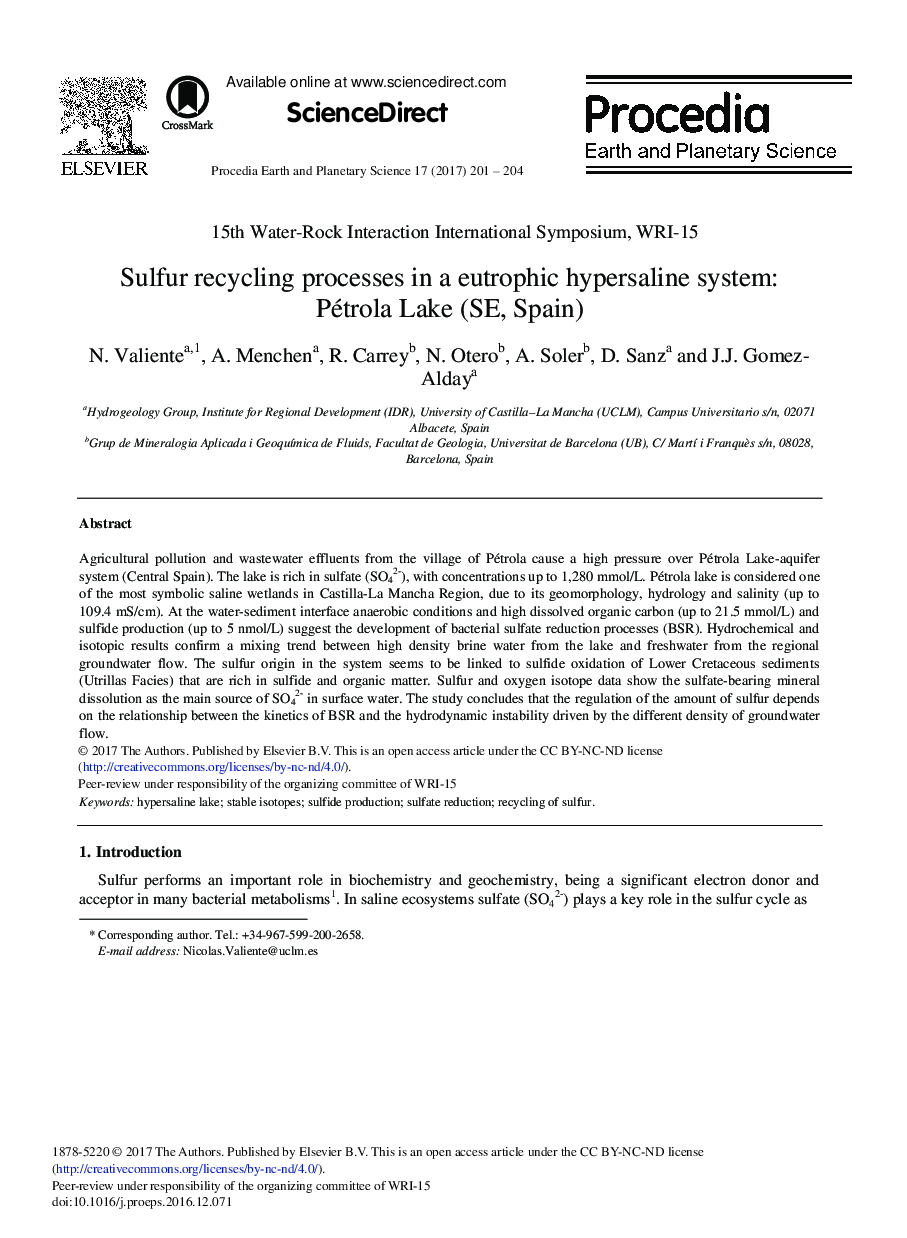| Article ID | Journal | Published Year | Pages | File Type |
|---|---|---|---|---|
| 5779269 | Procedia Earth and Planetary Science | 2017 | 4 Pages |
Abstract
Agricultural pollution and wastewater effluents from the village of Pétrola cause a high pressure over Pétrola Lake-aquifer system (Central Spain). The lake is rich in sulfate (SO42â), with concentrations up to 1,280 mmol/L. Pétrola lake is considered one of the most symbolic saline wetlands in Castilla-La Mancha Region, due to its geomorphology, hydrology and salinity (up to 109.4 mS/cm). At the water-sediment interface anaerobic conditions and high dissolved organic carbon (up to 21.5 mmol/L) and sulfide production (up to 5 nmol/L) suggest the development of bacterial sulfate reduction processes (BSR). Hydrochemical and isotopic results confirm a mixing trend between high density brine water from the lake and freshwater from the regional groundwater flow. The sulfur origin in the system seems to be linked to sulfide oxidation of Lower Cretaceous sediments (Utrillas Facies) that are rich in sulfide and organic matter. Sulfur and oxygen isotope data show the sulfate-bearing mineral dissolution as the main source of SO42â in surface water. The study concludes that the regulation of the amount of sulfur depends on the relationship between the kinetics of BSR and the hydrodynamic instability driven by the different density of groundwater flow.
Related Topics
Physical Sciences and Engineering
Earth and Planetary Sciences
Atmospheric Science
Authors
N. Valiente, A. Menchen, R. Carrey, N. Otero, A. Soler, D. Sanz, J.J. Gomez-Alday,
